
Arguably the most influential musical culture of the last 50 years, hip hop has come a long way from underground DJs cutting up breakbeats at block parties. Yet its power to move people still comes from the funky drum patterns that were there at its inception.
In this beginner’s guide to making hip hop drum patterns, we’ll take a look at some classic tracks to analyze the fundamental elements of beatmaking in hip hop. We’ll then look at how you can build these elements step-by-step to create a beat that you can use as the foundation of your own track. Think of this guide like a hip hop drum pattern cheat sheet!
Jump to these sections:
Follow along with this tutorial using EMPIRE BREAKS, KONTAKT 7 and CRUSH PACK.
LEARN MORE
How are hip hop beats made?
In the early days of hip hop before the advent of digital, modern hip hop sampling, DJs would use two turntables and records with funky drum breakdowns to create an extended beat-based groove.
As hip hop culture blossomed and artists began to make hip hop records in the late 70s and early 80s, producers would recreate this record-based approach to making music with analogue recordings of breakbeats in tracks such as West Street Mob’s “Break Dance – Electric Boogie” (employing Incredible Bongo Band’s “Apache,”) or by replaying tracks with a live band as heard in Sugarhill Gang’s “Rapper’s Delight” (a recreation of Chic’s “Good Times.”)
In the 80s as drum machines improved in quality and lowered in price, hip hop producers began using them to create funk-inspired beats on tracks like Run DMC’s “Sucker MC’s.”
As digital samplers began to become relatively affordable in the late 80s and early 90s, hip hop producers began sampling breaks, cutting them up and replying them in new patterns. Funk breaks such as The Honey Drippers’ ”Impeach The President,” Melvin Bliss’ “Synthetic Substitution,” and Skull Snaps’ “It’s a New Day” became the backbone of hundreds of hip hop tracks.
In today’s music production process, hip hop producers use DAWs (Digital Audio Workstations) as well as hip hop VSTs to create hip hop drum patterns and hip hop beats.
What makes hip hop beats funky?
Aside from the sonic texture of the breaks, a big part of the classic hip hop drum beats sound comes from how they’re programmed. The popular E-mu SP-1200 and Akai MPC60 hardware samplers had built-in sequencers that allowed producers to add swing to their programmed drum parts. This could be used to adjust the timing of 1/8th or 1/16h notes, playing them slightly later and adding an infectious groove to the rhythm.
We can see swing in action on tracks such as Mobb Deep’s seminal “Shook Ones Pt.II” from 1995.

In this picture Ableton Live’s sequencer grid is set to 1/6th notes. You can see that all the notes that play on 1/8th notes are sequenced perfectly on the grid.
However, the kick drums on 1.2.4 and 1.4.4 are 1/16th notes, and these play halfway between that grid line and the next.
This is 1/16h-note swing, and it’s what gives a lot of hip hop its head nodding, funky feel.
Below is a bar taken from J. Cole’s “Wet Dreamz” from 2015. Again, you can see the 1/16th note swing at 1.2.4.

Below is a bar from Denzel Curry’s “Walkin” from 2022. This track is unusual in that it features a tempo change: it begins with a swung hip hop beat in the low-80 BPMs, before switching up to a faster, straighter trap-style section a third of the way into the track.

This bar is taken from the first part of the track, and you can see that it features 1/8th note swing, as the hats on 1.1.3, 1.2.3, 1.3.3 and 1.4.3 play after the grid. This gives the track a more lopsided feel than the beats with 1/16th note swing.
It’s much easier to hear swing in action, so let’s dive in and start composing a beat. These hip hop drum beat techniques also are used in rap drum patterns and trap drum patterns. We’re going to use Native Instruments EMPIRE BREAKS for this, which is a dedicated hip hop beat library that works with the free KONTAKT PLAYER, making it a great way to start making beats.
How to make a hip hop drum pattern
1. Pick a kit
In all kinds of production the right sound selection is essential, so before we program a beat let’s pick a kit with a heavy but smooth hip hop flavor. You can check out the sound of EMPIRE BREAKS’ drums by triggering them from a MIDI controller, or clicking the drum pads on the instrument’s interface. You can use the arrow buttons in the preset name section of the interface to select different kits to audition. The Disco Kit (122 BPM) preset sounds perfect for a big hip hop beat, so let’s use that when creating our hip hop MIDI drum patterns.

2. Program a beat
Set your DAW’s tempo to 88 BPM, and create a one-bar MIDI clip. Add C1 kicks on beats 1 and 3, D1 snares on beats 2 and 4, and F#1 closed between the beats.
This is a solid beat, but there’s no swing so it’s sounding quite robotic at this point.
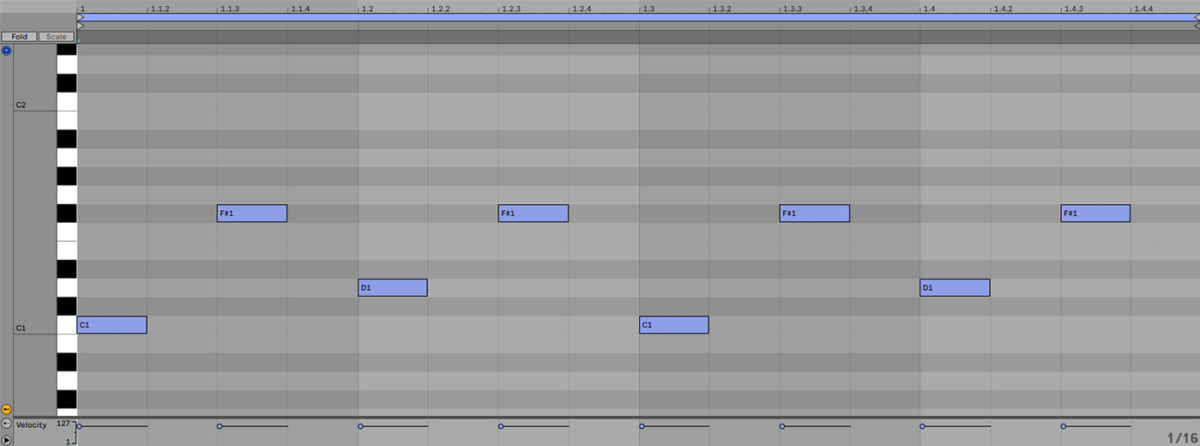
3. Add a touch of swing
Add another C1 kick on 1.2.4, the last 1/6th note before the third beat. Without swing this still sounds plodding, so turn off your DAW’s snap-to-grid function (also known as quantization), and move the kick back so that it’s roughly halfway to the next 1/16th.
DAWs feature swing quantization to do this sort of thing automatically, but by getting hands on we can get a really good idea of what’s happening here timing-wise.
This kick now sounds much more hip-hop-like, but it’s a little loud, so turn down its velocity to make it a touch quieter.

4. Switch things up
We can add a touch more funk by switching the third closed hat up to an open hat. Move it up to G#1 to achieve this. Now we’re getting somewhere: this beat has a swung groove and the open hat keeps it flowing nicely.
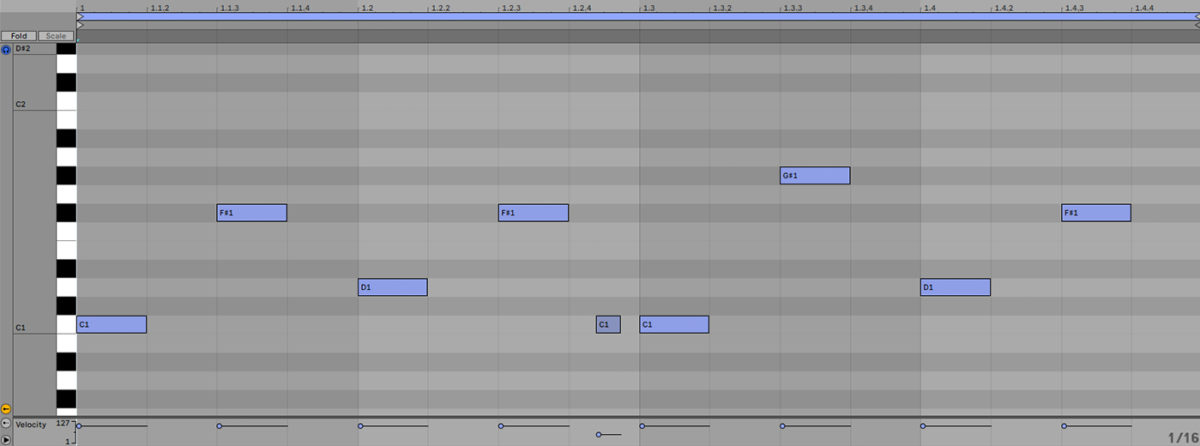
5. Reduce the dynamics range
EMPIRE BREAKS’ kits feature built-in processing, and if you click the FX button, then select the Global FX section, you’ll see that there are a wealth of effects on the instruments main out. Select the Limiter module by clicking it, and turn down the Threshold knob. This controls the volume level that the litter kicks in at, and by turning it down we can reduce the dynamics range of the signal and get a louder-sounding beat.
The trick here is to get the balance right between punchy dynamics and characteristic grit. Let’s go for a threshold of -8 dB.
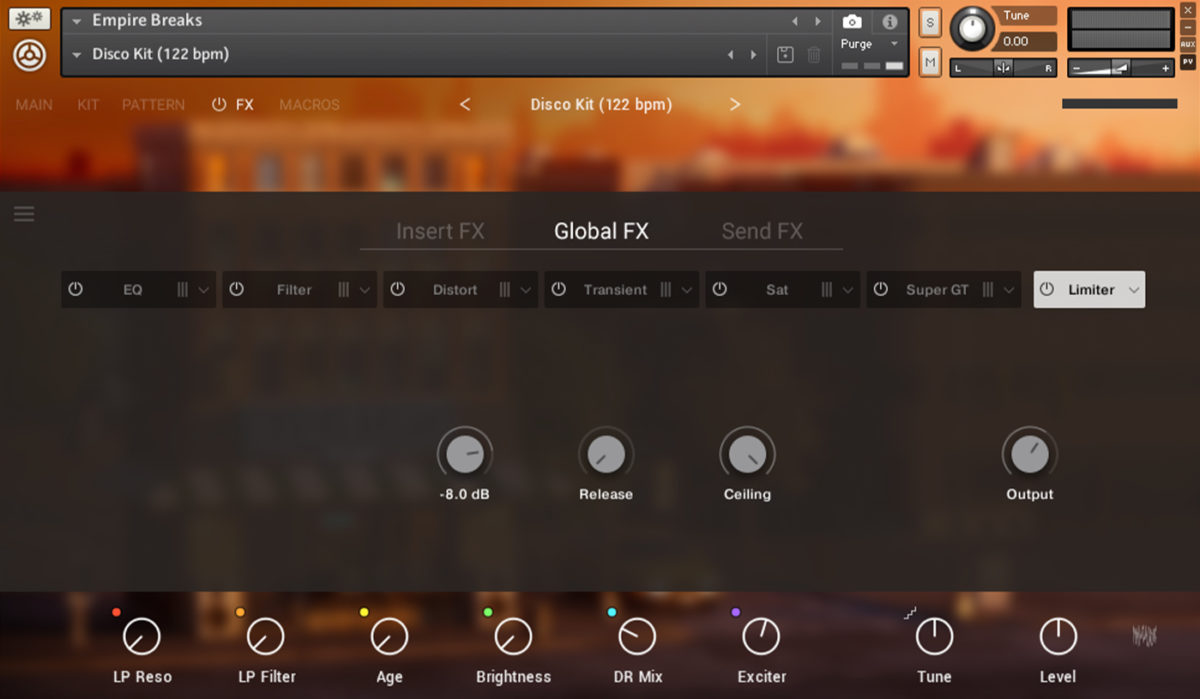
6. Apply a gritty sheen
We can get a yet grittier sound by adding a touch of distortion. Click Distort FX and you’ll see that both the Drive and Damping parameters have yellow dots next to them, indicating that they are both controlled by the Age macro knob, which also has a yellow dot next to it, at the bottom of the interface. Turn up the Age macro to 15%, you can hold the Shift key for fine control.
This gives the beat an extra vintage-style layer of crunch that is reminiscent of classic hip hop breaks and lo-fi hip hop patterns from 90s productions.
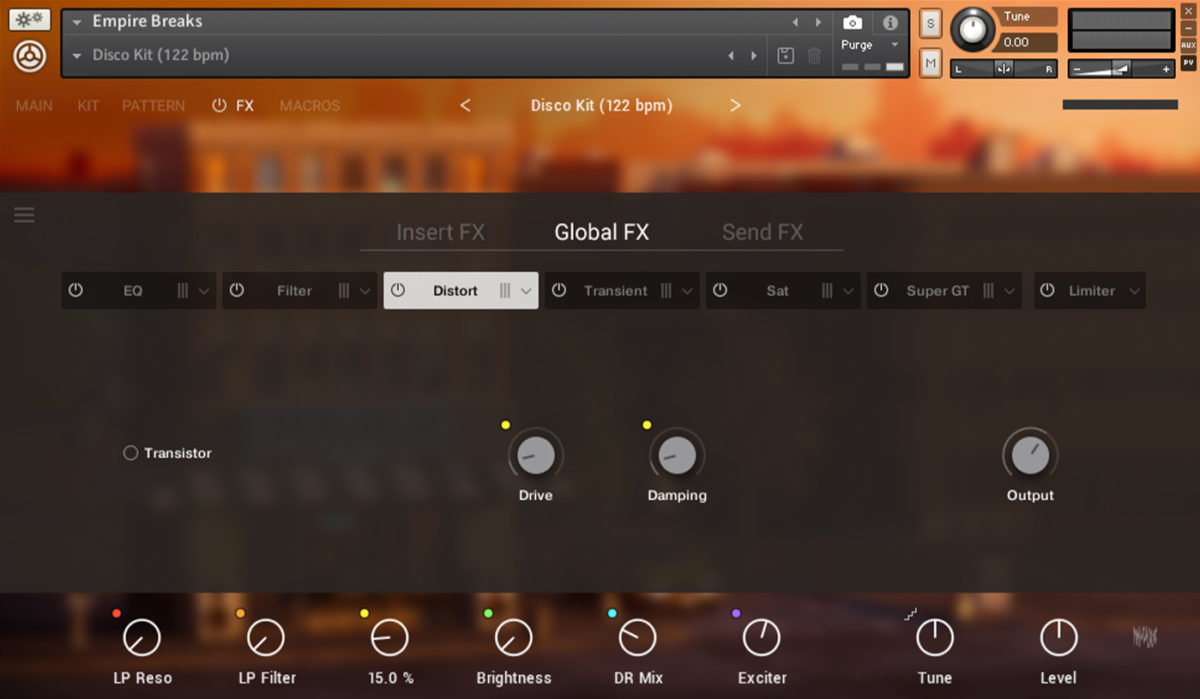
7. Find a bass sound
Now we’ve got a beat, let’s add a bass line for some musicality. Jazzier hip hop tracks sometimes use upright bass, and this has a big, frequency range-filling sound that gives us a solid feel without adding too much else.
KONTAKT 7’s Factory Library 2 includes some great bass sounds. Select the KONTAKT library, then set the Banks filter to Band, click the Bass tag, and double-click the Jazz Upright patch to load it.
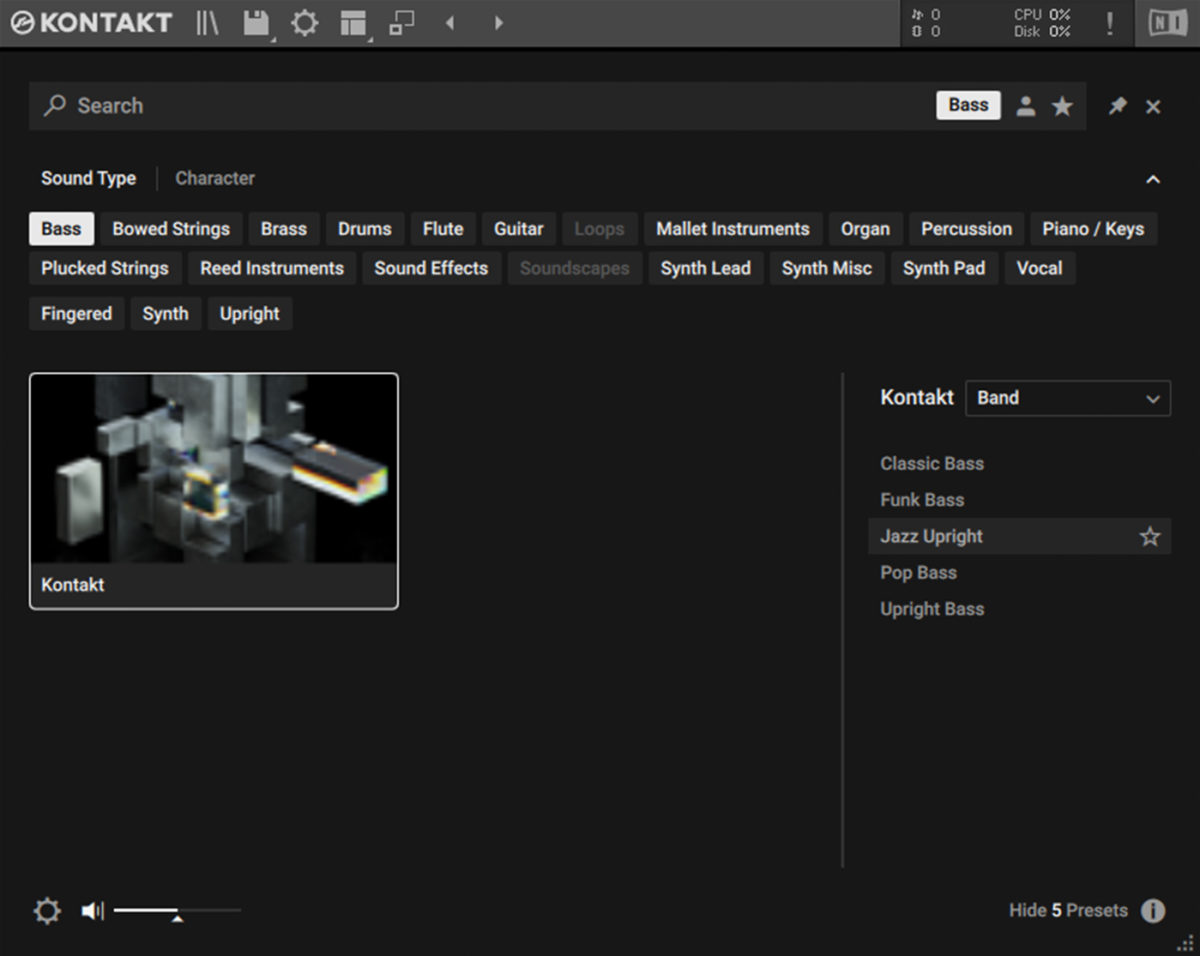
8. Compose a bassline
Here’s a bassline composed around a C minor 7 chord. This is played in live, so notice that it’s not quantized to the grid, and the small timing variations give it a natural, organic feel.
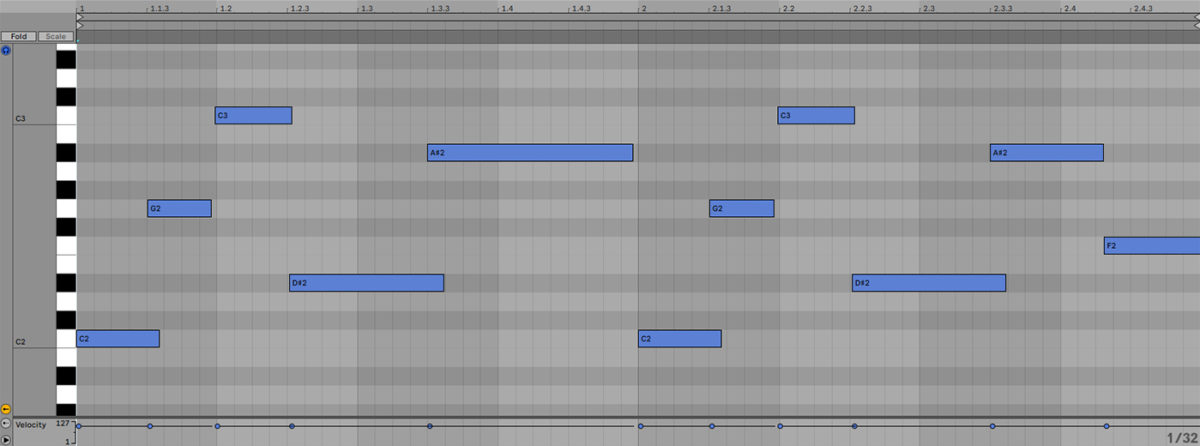
To beef the sound up, try adding DIRT from Native Instruments CRUSH PACK, and selecting the Berlin Treblemaster preset. This causes the DAW’s master to clip, so turn down both the drum and bass tracks to -3 dB.
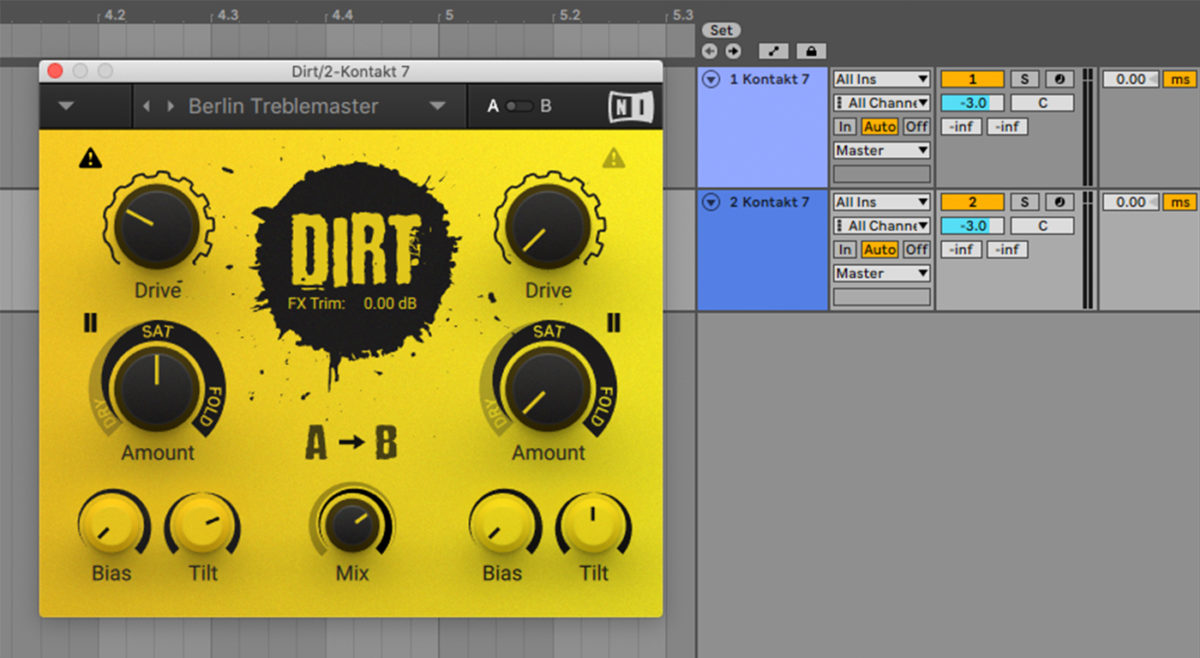
And here’s what the final hip hop drum pattern sounds like!
Start making hip hop drum patterns
Here we’ve seen how you can make your own hip hop drum patterns from scratch using swing to get a funky feel, and processing to get a raw, organic sound. If you’d like to learn more about this subject check out Hip hop Sampling 101, Understanding Instrumental Hip hop and How to Make a Type Beat.
For instruments and effects you might find useful, be sure to take a look at EMPIRE BREAKS, KONTAKT 7, CRUSH PACK, BATTERY 4, and BUTCH VIG DRUMS.
LEARN MORE ABOUT KONTAKT















